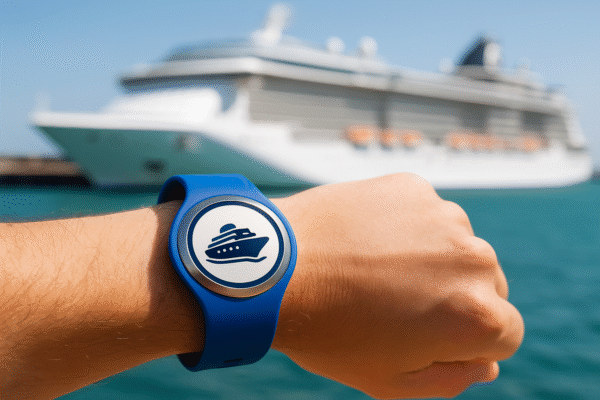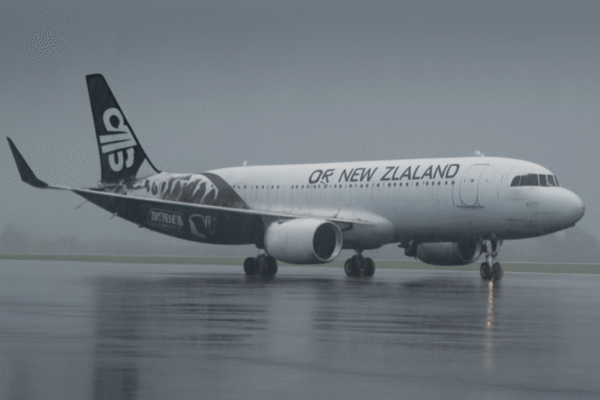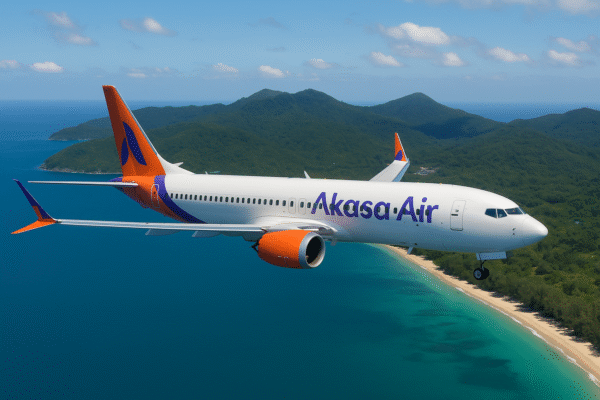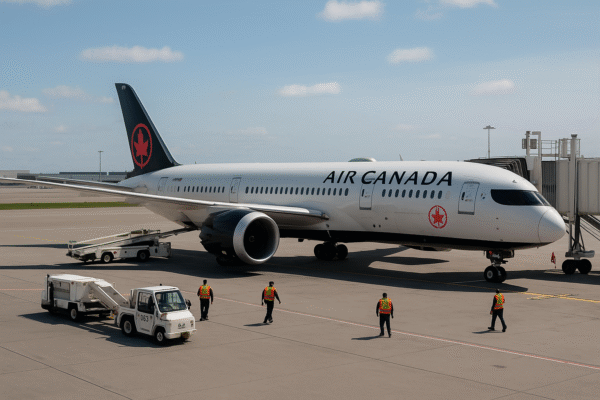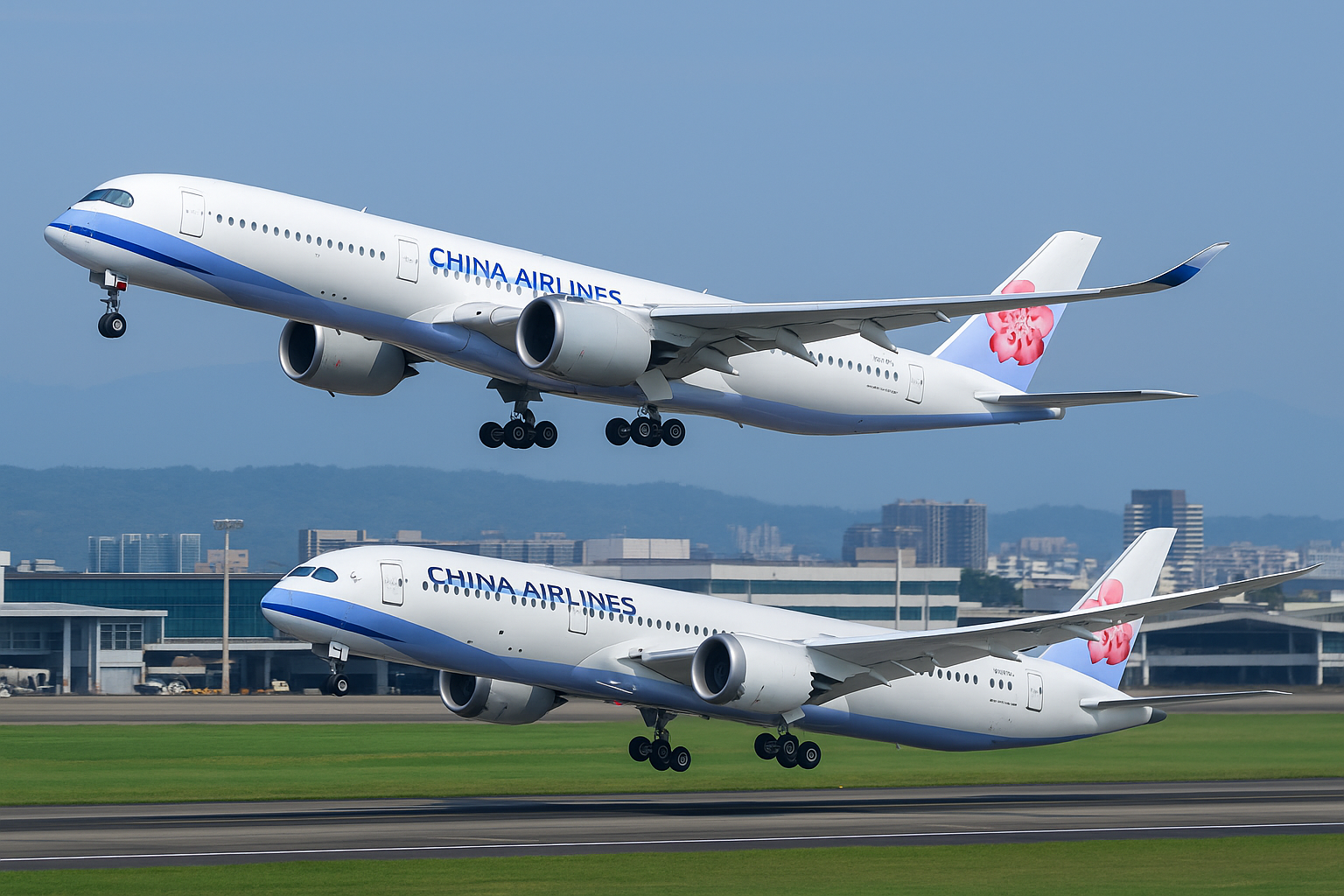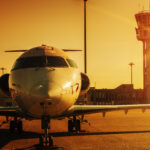Taiwan is making a bold leap into global aviation leadership as China Airlines embarks on a sweeping fleet modernization program that is reshaping the airline’s strategic vision and operational capabilities. With significant investments in next-generation Airbus and Boeing aircraft, the Taipei-based carrier is redefining air mobility standards for the 21st century—combining sustainability, efficiency, and passenger-focused innovation.
By expanding both its widebody and narrow-body fleets, China Airlines is positioning itself as a powerful connector between Asia and the world. This transformation not only advances the airline’s long-term growth strategy but also enhances Taiwan’s standing as a regional and global aviation hub.
Major Aircraft Orders Signal Commitment to Global Expansion
In a strategic move, China Airlines has confirmed orders for:
- 5 additional Airbus A350-900s, increasing its long-haul fleet to 20
- 10 Airbus A350-1000s, offering greater capacity and extended range
- 8 more Airbus A321neo jets, growing its total narrow-body fleet to 36
- 24 Boeing 787 Dreamliners, including six 787-10 variants for enhanced long-haul efficiency
- 10 Boeing 777X aircraft, preparing for future ultra-long-haul routes
This multi-billion-dollar investment is one of the most comprehensive fleet updates by an Asia-Pacific carrier in recent years. It reflects China Airlines’ strategy to expand its global network while prioritizing passenger experience, operational flexibility, and environmental performance.
Airbus A350-1000 and A321neo to Transform Travel Experience
The inclusion of Airbus A350-1000s—the largest variant in the A350 family—marks a significant milestone for China Airlines. With enhanced range and capacity, these aircraft will be deployed on long-haul routes to North America, Europe, and Oceania, increasing frequencies and introducing new destinations. Their cutting-edge design also supports lower fuel consumption and reduced CO₂ emissions, aligning with the airline’s green aviation objectives.
On the regional front, the addition of eight more Airbus A321neo jets solidifies China Airlines’ position in the high-demand intra-Asia market. With 17 already in service, the expanded narrow-body fleet will serve short to medium-haul destinations including Tokyo, Bangkok, Hong Kong, Singapore, and Seoul, offering greater scheduling flexibility and network depth.
Boeing 787 and 777X Orders Underscore Long-Haul Ambitions
China Airlines’ upcoming fleet of 24 Boeing 787 Dreamliners, including six of the 787-10 variant, will provide high-efficiency operations for medium and long-haul routes. With advanced aerodynamics, lightweight composite structures, and quieter engines, the Dreamliner family is a cornerstone of the airline’s sustainability strategy.
Complementing this is the airline’s commitment to the Boeing 777X program. Known for its increased seating capacity and exceptional range, the 777X will be critical in expanding nonstop connectivity between Taipei and distant global gateways such as New York, London, Frankfurt, and Vancouver.
$400 Million Investment to Upgrade Current A350s
In tandem with its aircraft acquisitions, China Airlines is committing $400 million to revamp its current fleet of 15 A350-900s. This upgrade will include:
- All-new First and Business Class seating
- Enhanced Premium Economy and Economy Class comfort
- State-of-the-art inflight entertainment systems
- Advanced lighting, cabin noise insulation, and connectivity solutions
By upgrading its existing fleet, China Airlines ensures that its legacy aircraft will match the standards of incoming models, offering a seamless and modern experience across all cabin classes.
Financial Strength Fuels Ambitious Growth
This bold fleet modernization is underpinned by robust financial performance. In Q1 2025, China Airlines reported a record net profit exceeding $160 million, driven by a resurgence in international travel and strong cargo demand. The airline’s financial health provides the foundation to invest confidently in infrastructure, fleet, and future growth initiatives.
Taiwan’s Strategic Ascent in Global Aviation
China Airlines’ modernization effort is not merely a business strategy—it reflects Taiwan’s larger vision of becoming a key aviation node in the Asia-Pacific region. With Taoyuan International Airport’s Terminal 3 expansion nearing completion, and new aviation policies favoring connectivity and sustainability, Taiwan is rapidly emerging as a strategic air travel gateway.
The airline’s dual investment in Airbus and Boeing also hedges against future market fluctuations, ensuring that China Airlines remains resilient amid supply chain uncertainties and global demand shifts.
Commitment to Environmental Responsibility
A standout aspect of China Airlines’ fleet overhaul is its focus on sustainable aviation. Both the Airbus A350 and Boeing 787 families boast up to 25% lower fuel burn compared to previous-generation aircraft. This translates into significantly reduced emissions and aligns with ICAO and IATA environmental benchmarks.
By replacing older aircraft and introducing high-efficiency jets, the airline is actively contributing to global decarbonization goals while improving its own carbon footprint—critical to gaining consumer trust and regulatory favor.
Conclusion: Redefining Air Mobility for a New Era
With an ambitious and future-ready fleet strategy, China Airlines is preparing for a new era of growth, innovation, and global relevance. Through the integration of cutting-edge widebody and narrow-body aircraft, comprehensive cabin upgrades, and a firm commitment to sustainability, the airline is establishing itself as a leader in modern air travel.
As international travel stabilizes and demand rises, China Airlines is poised to meet the evolving needs of travelers across Asia, North America, Europe, and Oceania. More than just a carrier, China Airlines is becoming an emblem of Taiwan’s rise in global aviation—charting a course that others in the region will likely follow.
For more travel news like this, keep reading Global Travel Wire


